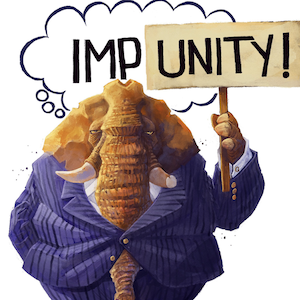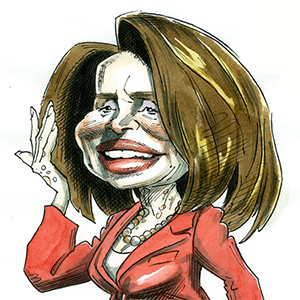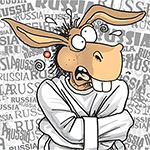The Democratic Party Had a Bad October!
Was it just a coincidence that Vice President Kamala Harris showed up, 15 minutes late, to be interviewed by Fox News' Bret Baier a day before Nate Silver's poll aggregation website showed her chances of winning the election slipping below 50%? Probably not.
What may link Harris' slide in the polls and her tardy appearance for an interview in which she served up word salads to Baier's questions on immigration and inflation and then segued, sometimes awkwardly, to denunciations of former President Donald Trump? October hasn't been a good month for Harris or her party.
Nor has it been an entirely bad one. Silver's model still gives her a 47% chance of winning, much higher than Trump's 29% on election eve 2016. But it's perceptibly below her 57% chance on Sept. 27, which reflected poll results after the Sept. 10 debate. "Since then," Silver writes, "the race has slightly drifted away from her."
Slightly but perceptibly. Silver's model gives reduced weight to polls conducted as long as six weeks ago. Another way of looking at the trend is to take a raw average of all polls conducted over a month. That method shows Harris leading Trump nationally by 3.6% in September and 1.7% in October.
The RealClearPolitics average, which includes only polls conducted starting Oct. 9, puts Harris' lead lower, at 0.8%. A Harris popular vote plurality of less than 2%, Silver estimates, has only a 16% chance of producing a Harris electoral vote majority.
Poll averages in this year's seven target states show something similar. September polling had Harris ahead in four of the seven states. October polling showed her leading in one, with Trump ahead in four and tied in two. The 34 target-state polls listed by RCP conducted primarily or totally since Oct. 9 show Trump ahead in all seven states, by an average of 48.5% to 47%.
There have been similar shifts below the presidential level. In RCP's generic vote for the House of Representatives, Democrats' lead was cut in half, from 1.8% on Sept. 30 to 0.9% now. That's been consistent in past years with Republicans winning a majority of House seats.
In Senate races, Republicans seem to have captured two Democratic seats -- in Montana, where challenger Tim Sheehy has led three-term incumbent Jon Tester in two polls by 52% to 44%, and in West Virginia, where no one seems to have bothered polling because Republican Gov. Jim Justice seems sure to replace retiring Democrat Joe Manchin. In Trump-Vance's Ohio, Democrat Sherrod Brown leads Republican Bernie Moreno by only 0.6% in three October polls -- a danger sign for a three-term incumbent.
Republicans are challenging five incumbent or better-known Democrats in presidential target states. Democrats are still ahead in October polling -- by between 2.2% and 3.8% in Michigan, Wisconsin and Pennsylvania, and by a significantly larger 5% and 6.2% in Nevada and Arizona. In no case is the Democrat topping the magic 50% mark, which leaves at least three and perhaps all five Democrats vulnerable under standard political rules of thumb.
Why has the campaign been trending away from Democrats? Three hypotheses: One is that "vibes" are not enough for even a four-month campaign. The "joy" that partisan Democrats felt after President Joe Biden's withdrawal prevented a disastrous defeat was not shared by most voters.
Plus, what I've called the Democrats' "hide the candidate" strategy and Republican analyst John Ellis calls their "bubble wrap" strategy left many voters uncertain what she really thinks.
Choosing a president is a voter's most personal political choice, and even Harris' careful discipline and great smile have not established personal connections. Her campaign seems to have recognized this by switching strategy and booking "60 Minutes," Fox News and CNN appearances, with disappointing results so far.
That has left Harris open -- my second hypothesis -- to attacks on radical positions she has taken, especially in her 2019 campaign for the 2020 presidential nomination. Republicans, including Senate candidates as well as the Trump campaign, have been running TV ads on Harris' opposition to fracking (especially in Pennsylvania), her support of phasing out nonelectric cars (especially in Michigan), her endorsement of transgender surgery for prisoners, and her support of biological boys in girls sports. "Kamala's agenda is they/them, not you," is one effective tagline.
If you're outside a target-state TV market, you probably haven't heard much about these ads. As I wrote in September, part of the Harris strategy is to "trust a mostly sympathetic press, something like 90% of whose members want to see Trump lose, not to press hard on any subject that might not help the campaign."
Reporters and commentators, who mostly agree with Harris' positions but recognize they're widely unpopular, have tried to avoid these inconvenient subjects. But they can't suppress the Harris videotapes or convince voters that a Harris administration, once installed, won't pursue policies the candidate endorsed enthusiastically and which have been repudiated unconvincingly by anonymous staffers' tweets or Harris' grudging promises to "follow the law."
My third hypothesis, advanced the day after the Oct. 1 vice presidential debate, is that Sen. JD Vance's (R-Ohio) reassuring tone tamped down fears of an erratic second Trump administration, while Gov. Tim Walz's (D-Minn.) flustered performance "may damage the morale of Democratic voters" by making it harder for its core of liberal college graduates "to think of themselves as the smart people's party."
That may have been a stretch -- or it may turn out to help explain what appears to be lower Democratic participation in early voting this year. The one clear example is in target state Nevada, where well-respected veteran journalist Jon Ralston notes that Republicans lead in early voting this year and concludes that "if this becomes a trend and not an anomaly, it will be over" for Democrats. Anecdotal data suggesting similar trends in other target states should, however, be treated with caution.
Of course, the polls once again could be wrong. They show fewer undecideds this year, leaving less room for Trump to overperform his poll percentages. It's possible, as New York Times analyst Nate Cohn suggests, that polls weighting responses by voters' recollected 2020 votes may understate Harris' current strength.
On the other hand, we've also seen increased Trump support from Hispanic and Black men, and census data show population and, thus, probable turnout declines in central cities like Philadelphia and Detroit and some counties.
The fundamentals still favor Trump on the issues, with voters rating the Trump administration more positively than the Biden-Harris administration. While many voters have problems with Trump's character, his personal ratings are higher than they were in 2016 or 2020.
Perhaps as indicative as Trump's small but steady gains this October have been, the reactions to his stint at the fryer and drive-thru window at McDonald's in Pennsylvania last weekend were even more revealing. Trump supporters, like the candidate, have been all smiles, while Trump opponents -- check out the internet chatter -- have been bristling with rage. Guess which side thinks it's winning.
========
Michael Barone is a senior political analyst for the Washington Examiner, resident fellow at the American Enterprise Institute and longtime co-author of The Almanac of American Politics. His new book, "Mental Maps of the Founders: How Geographic Imagination Guided America's Revolutionary Leaders," is now available.
Copyright 2024 U.S. News and World Report. Distibuted by Creators Syndicate Inc.





































Comments